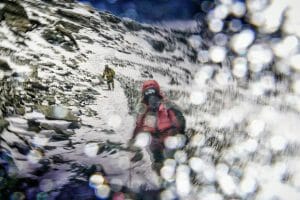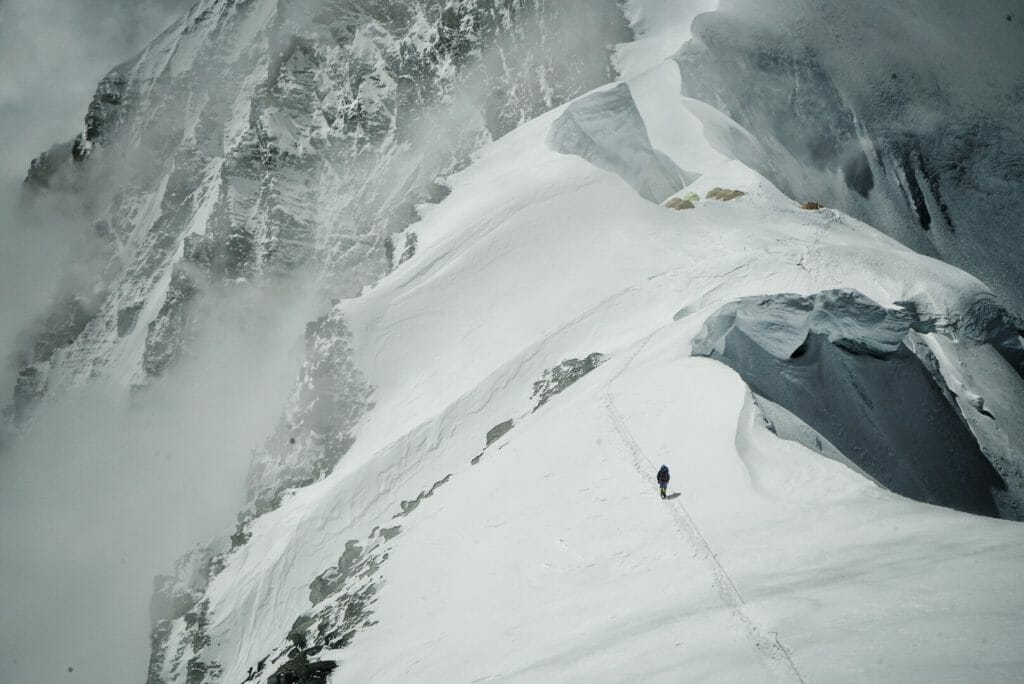As many of you know, Everest season is upon us. Two athletes that Scott and I have coached—Cory Richards and Adrian Ballinger—are in Base Camp as I write this to attempt the world’s tallest peak without oxygen. With their permission we wanted to share the stories of what brought us to work with these two motivated mountaineers. This is how Cory Richards of #everestnofilter fame made a 180-degree turn in his training to successfully climb Everest, and why he’s headed back again. Enjoy his story below, and read up on Adrian’s experience here.
When I saw the incoming call from Cory Richards back in December 2015, I wasn’t exactly surprised. It wasn’t just because we were friends—although we have been for nearly 15 years now. At that time, Cory had been calling with increasing regularity. With an upcoming trip to Everest in the works, and seeing little results from his current training regimen, he was starting to worry.
But when he asked me to coach him through the final three months leading up to the trip, I have to say, I was very hesitant. In fact, I told him “no.” I had told him previously that I didn’t agree with the strategy his other coach was employing—and with only 13 weeks to go to departure he had already gone down that road for too long. That was my initial assessment of the situation.
Cory had two things going for him, though, which convinced me to take over for the final stretch. First off, his primary focus for the remainder of his time before Everest was to train. He was willing to put everything else on hold. Secondly, he promised to do exactly what I told him.
Now, coaching someone to climb Everest without supplemental oxygen and actually climbing Everest without supplemental oxygen are two very different things. But what they have in common is that dive into the unknown. When I took Cory on, I had no idea what would happen as we had not worked together in a coach-athlete capacity. I had questions: How well would Cory’s body respond to the training stimulus? Would 13 weeks be long enough? Would his base aerobic capacity be strong enough to allow me to take a training program that usually takes four to six months and compress it into three months? I had my doubts. But I decided to give it a try. At the very least, I knew he had a better shot working with me than continuing down the all-high-intensity-all-the-time path he’d been on.
To make a very long story short, Cory did respond exceptionally well to our training plan, and he started seeing dramatic improvements by the end of the first month. You can read a little about his experience from his own perspective here. On May 25, 2016, on his 45th day on the mountain, Cory summited Everest without supplemental oxygen. He failed to send a Snapchat from the summit, as was his goal, because his phone battery died, but we won’t hold that against him.
During that trip to Everest, Cory was climbing with Adrian Ballinger (Adrian did not train with Uphill Athlete in 2016 but started early last December for the 2017 climb they’re on now). Due to our success working together, and at my urging, I kept track of Cory’s daily exertion via TrainingPeaks connected by satellite internet, just as I would an athlete training in New York or Singapore. I was also getting lots of text messages from him, and one of the things he continually noted was how Adrian was stronger, faster, and able to carry more weight basically the entire way. This was bothering Cory (along with his difficulty to keep up with other climbers as well), and he often wanted to increase his pace. But I strictly forbade him from getting into a race, convincing him instead to stick to an easy pace, as I knew that would give him the best chance of success on summit day.


When summit day came, Cory was feeling strong—maybe the best he had felt the whole time on the mountain, especially in comparison to the other climbers. Adrian, meanwhile, was starting to run out of fuel and he got very cold. Eventually, Adrian pulled the plug and turned around (his extreme cold was due to a diet/training issue, which we examine in depth in his article). Cory, meanwhile, kept going. And he summited in 8 hours from high camp, which is a very respectable time without supplemental oxygen.
Of course Adrian was in decent shape, but had trained incorrectly and on the wrong fuel. These issues in his training showed up in his physiological response to extreme altitude like a sore thumb. Needless to say, he was planning his return trip even before he got home. Fast-forward six months, and after a lot of poking and prodding, he had convinced Cory to return with him. So yet again, back in January, my phone buzzed and there was Cory’s name on the screen.
This time around, 2017, Cory’s situation was the polar opposite of what he’d brought to me before. He was far too busy with all kinds of film and photography assignments for National Geographic and Eddie Bauer to devote himself fully to the training process.

So once again, I began creating daily workouts and coaching Cory. This time I knew him and his responses much better, so I felt more confident in the results we’d see from his training. And the advantage, as always, of coaching is that it gives us the opportunity to work with the athlete’s schedule to do the best training we can for the given objective, while working around immoveable responsibilities. No two climbers, or climbs are the same. The program we designed for Cory this year wouldn’t have worked on last year’s climb, and vice versa. Our ability to work with the complex lives of our athletes is certainly one of the things Scott and I pride ourselves on.
This time around, Cory was not quite as religious with his devotion to the training schedule, as expected. And it shows. He knows that he is going back to Everest this year not as fit as he was last year. But we still think he has a great chance. And Adrian, who is certainly hungrier than Cory since he did not manage to summit last year, is ready and rearing, and in excellent shape.
So we’ve got our collective fingers crossed for them here at Uphill Athlete, and are following their progress closely. And we recommend you do, too. The pictures and stories are bound to be entertaining. For instagram: @coryrichards and @adrianballinger, and of course: #everestnofilter on Snapchat. And make sure to check out Adrian’s story here.

